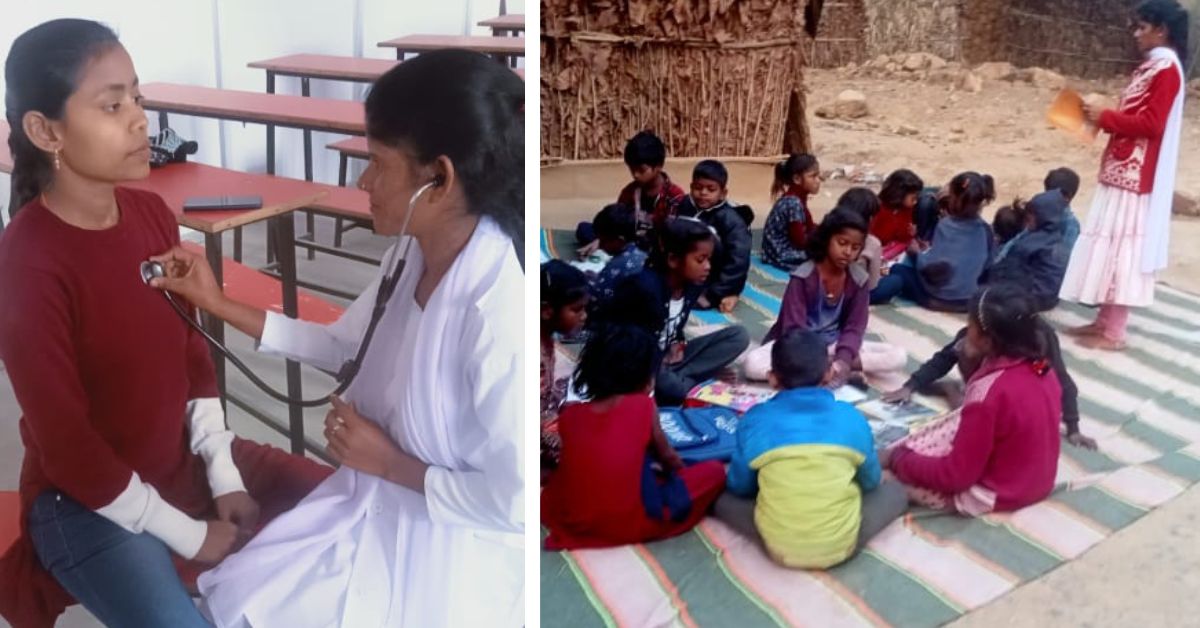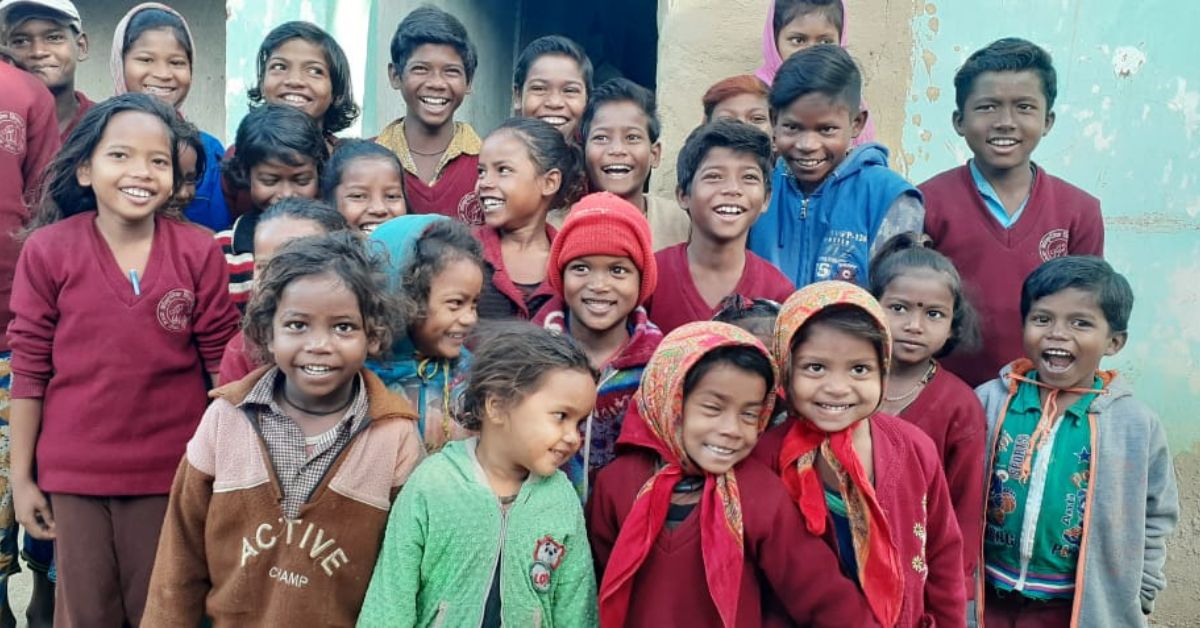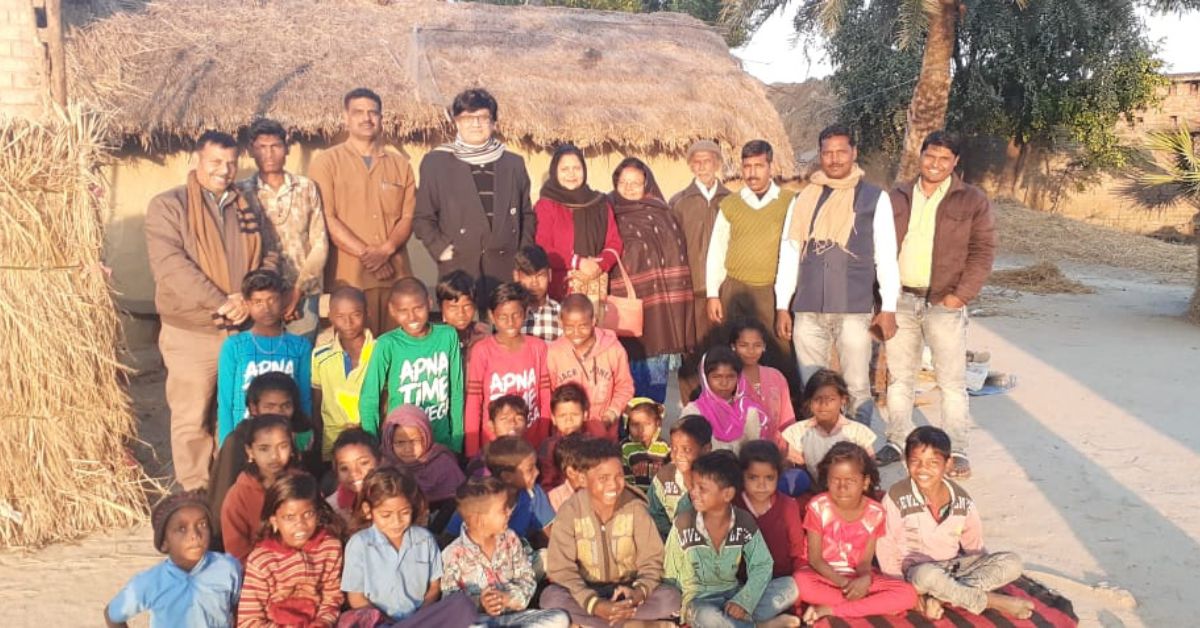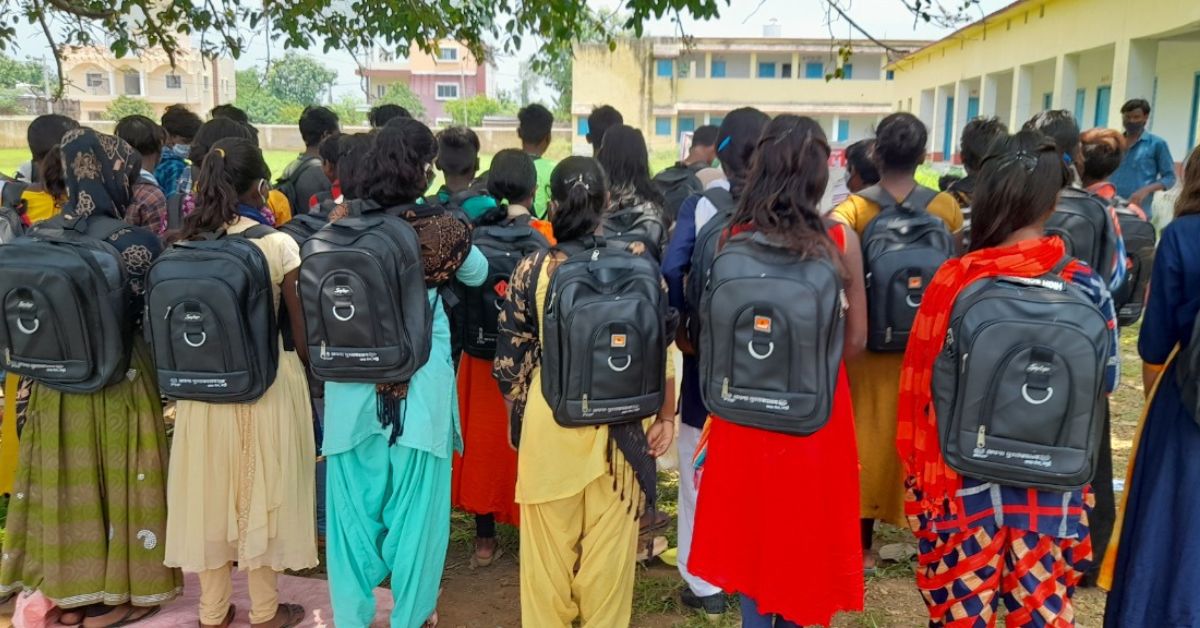70-YO Doctor Helps Bihar’s Musahar Community Break Shackles of Child Marriage & Labour
Bihar’s Dr Shankar Nath Jha has been using education as a tool to empower children from the socially marginalised Musahar community. He has helped enrol as many as 5,000 children in schools since 2007.

On a regular day in Bihar, Seema Kumari found herself engrossed in her usual household chores when her father unexpectedly requested her to get ready as they were expecting visitors. Oblivious to the reason, she promptly readied herself and was then instructed to greet the arriving family.
Seema was taken aback when the conversation between the two families shifted towards discussing marriage rituals. At the tender age of 17, she found herself in an unexpected situation. Memories of her elder sister, who had also been married at a young age despite having only completed Class 6, came rushing back to her.
“I had no idea my marriage was getting fixed. After the family went, I protested to my father that I did not want to get married. My father asked me, ‘What will you do then?’,” recalls Seema in conversation with The Better India.
Within Bihar, 40.8 percent of women, representing four out of every 10, enter into marriage before reaching the legally mandated age of 18. Among the 38 districts in the state, 12 districts surpass the average prevalence of child marriage. Notably, Seema’s hometown of Jamui is one such district, along with Supaul, Purnia, Saharsa, and Begusarai.

Child marriage is closely associated with abject poverty and young girls are often forced to get married in the absence of education and awareness. But that day, Seema was able to break out of this cycle. “I told my father that I wanted to become an ANM (Auxiliary Nurse Midwife). Fortunately, he decided to support me, and my marriage talks stopped,” says the 22-year-old, a second-year student at RB Chandra Para Medical Nursing College, Jamui.
“If I hadn’t spoken up, I would have been forced into marriage like many other village girls. They marry young, become mothers early, and suffer health issues as they grow weaker. Today I feel empowered; all this was possible because of the efforts of Doctor Sir. It was due to his guidance that I was motivated to study,” she says.
For the past two decades, Dr Shankar Nath Jha, a paediatrician by profession, has volunteered to help children like Seema to use education as a tool for empowerment. Like Seema, he has helped 407 children from the Musahar community in the district to break the shackles of child marriage and labour.
Because of his efforts, today, Seema is able to afford her college fee of Rs 1.5 lakh and is also teaching around 30 children from her community in a village chaupal.
Empowering the Musahar community
Socially marginalised, the Musahar community is located at the bottom of India’s caste system. Musahar in Bhojpuri literally means “rat eaters”. They were often compelled to subsist on a diet of rodents. Although their main former occupation was to catch rats, they now mostly work as agricultural and brick kiln labourers.

The community lives in Bihar, Jharkhand, Madhya Pradesh, and some districts of eastern Uttar Pradesh. As per the 2011 Census, Bihar is home to at least 2.5 lakh Musahars.
Dr Jha, who has been in the medical service for the past 40 years, would often get patients from Musahar community in his clinic. Explaining their socioeconomic status he says, “Their children are malnourished. Even if their children die, they would not shed tears [because the death rate was high and they were often emotionally drained]. I would see skinny young girls with children in their arms. It would be very heart-wrenching to see that,” the 70-year-old tells The Better India.
“I would often wonder that if they get graduated or at least learn to read and write, their lives could get better. But there is low awareness in the community. They live in unhygienic conditions and are involved in child labour. Let alone girls, we would not find even boys who had passed Class 10. I wanted to work for these children,” he says.
According to The Musahar: A Socio-Economic Study by Patna’s AN Sinha Institute of Social Studies supported by the National Human Rights Commission, education among the members of the community was almost non-existent, the literacy rate is only six percent. “Development programmes of the Government had not reached them,” notes the study.
“Political parties also do not show any interest to work for them. They get their votes with free murga (chicken) and daru (alcohol). In schools, they were excluded and not allowed to sit with others,” informs Dr Jha.

Treating the root cause
In a bid to help these children, Dr Jha started visiting the shanties of the Musahar community living in the Dalit localities of the district. He decided to teach the children but found that it was difficult to stay at the place post-afternoon.
“Men would get drunk after 2 pm and walk lazily. It was challenging to convince them to send their children to study. The only advantage I had was people knew me and respected me because of my profession. No one protested when we started educating the children,” he adds.
Along with a non-profit Samagra Sewa Sansthan’s founder Makeshwar, Dr Jha started using some part of his income and spared some time off to visit the community. Gradually, he hired some teachers out of his own pocket to teach the children and engaged them in sports, dance, and debate programmes.
“We focussed on cleanliness, education, and employment. We started getting donations from individuals and my peers to distribute food materials, clothes, books, etc. Seeing this, more and more children got motivated and started joining the classes. These were all small steps, but the result was big,” says Dr Jha, who is also a senior advisor of the non-profit.

Today, nearly 5,000 children are associated with 85 centres [called Community Culture Education Centre] where 82 volunteers teach the children basic education so that they can be on par with their peers in schools. Since 2007 when the initiative started, as many as 5,000 children have been enrolled in schools. Currently, about 3,000 children are studying in the centres across Jamui.
“Once they are educated, they will be empowered to come out of the life of drudgery. Padha dogey to sab bimariyan door ho jayengi (Once you teach children, they will get rid of all adversities of poverty). Communities which did not know the importance of education are now seeing graduates among them. As a secondary benefit, girls have started resisting early marriages, children are leaving labour jobs and have started entering the mainstream,” he says.
For his work, Dr Jha was awarded the Maulana Abul Kalam Azad Shiksha Puruskar, Bihar’s highest award in the field of education, by Chief Minister Nitish Kumar in 2021. If you found our stories insightful, informative, or even just enjoyable, we invite you to consider making a voluntary payment to support the work we do at The Better India. Your contribution helps us continue producing quality content that educates, inspires, and drives positive change. Choose one of the payment options below for your contribution- By paying for the stories you value, you directly contribute to sustaining our efforts focused on making a difference in the world. Together, let’s ensure that impactful stories continue to be told and shared, enriching lives and communities alike. Thank you for your support. Here are some frequently asked questions you might find helpful to know why you are contributing?

“I have grown up playing with children irrespective of their caste or community. My parents have always taught me how to live harmoniously with all communities. It feels satisfying to do something for this [Musahar] community although I never thought this would have such a big impact. With the award, I got more recognition and support from peers, even from foreign countries. I will continue this work for the remaining years of my life,” he says.
(Edited by Pranita Bhat; All pictures courtesy: Makeshwar, Samagra Sewa Sansthan)
Sources:
National Family Health Survey-5 by Union Ministry of Health & Family Services.
Child Marriage in Bihar: Key Insights from the NFHS-5 (2019-21) by United Nations Population Fund (UNFPA) published in June 2022.
Study on the Musahar Community of Bihar by the AN Sinha Institute of Social Studies, Patna.
This story made me
-
97
-
121
-
89
-
167













